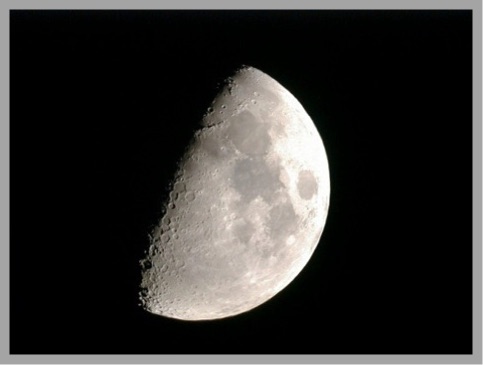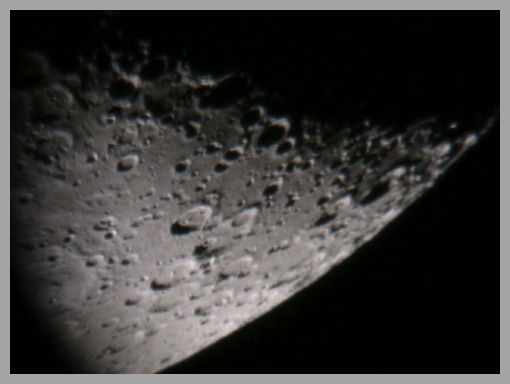Lunar Images
The moon is very easy to photograph because it is very bright - especially when viewed through a telescope. In fact, the reflectivity of the moon is nearly identical to dry concrete, so just think about looking at a cement slab, fully illuminated by the noonday sun and that is what you are looking at when viewing a full moon.
My first attempt as astrophotography consisted of holding a digital camera up to the eyepiece of my telescope (that was pointing at the moon) and snapping the shutter. The result was amazingly sharp, clear images which encouraged further experimentation.



This was among the first photographs I took through the eyepiece of my telescope.
The best photos of the moon are taken when the moon isn’t full. This photo illustrates that. Note how the craters near the lunar terminator (dividing line between light and dark) are especially visible due to the shadows cast by the low angle of the sun. Photos taken of a full moon tend to be flat and uninteresting.
I took this image a few months later. Again, notice the interesting craters visible near the lunar terminator.
These images were taken using higher magnifications.
Each of these images is actually about 10 separate images that were stacked on top of each other and then digitally sharpened to achieve an image with more detail than would be possible with a single image.
This stacking technique is especially useful for planetary images because it tends to average-out atmospheric distortion.

The name of the leftmost crater with the prominent central peak is Theophilus.
Apollo 16 collected several rocks that are believed to have been ejected from the impact that formed the crater Theophilus.